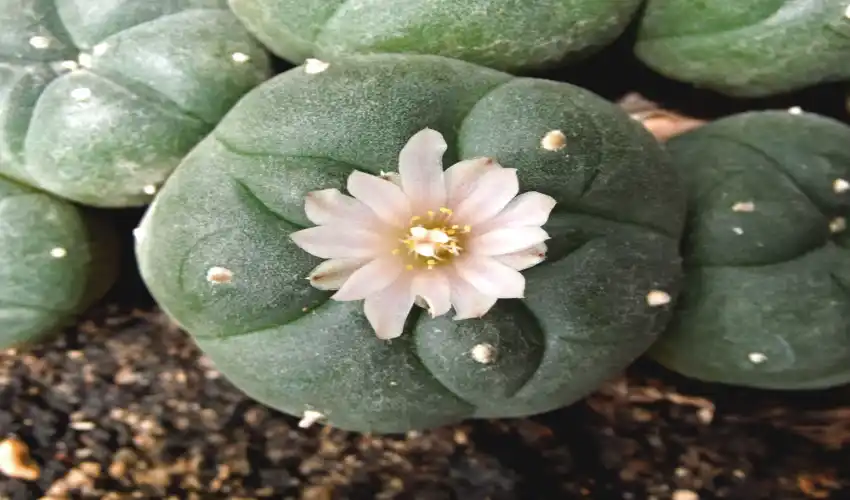
8 Fascinating Facts About the Peyote Plantq
The peyote plant, a small, spiny cactus found primarily in North America, has been used for centuries by indigenous cultures for its psychoactive properties. Known for its unique appearance and potent effects, the peyote plant has fascinated botanists, spiritual seekers, and researchers alike. In this article, we’ll delve into eight fascinating facts about the peyote plant, shedding light on its history, uses, and significance.
- Peyote is Native to North America
Peyote (Lophophora williamsii) is a small, button-shaped cactus that grows primarily in the deserts of northern Mexico and the southwestern United States. Indigenous groups, particularly those in Mexico and the southern United States, have used peyote in religious ceremonies for thousands of years. The plant thrives in arid regions, where it survives harsh conditions, growing close to the ground.
- Psychoactive Properties and Mescaline
Peyote for sale is renowned for its psychoactive properties, which are primarily due to a compound called mescaline. Mescaline is a naturally occurring hallucinogen that can induce altered states of consciousness, visual and auditory hallucinations, and profound spiritual experiences. The effects of mescaline can last for up to 12 hours, and the intensity varies depending on the individual and the dose.
- Peyote Has a Long History of Use
Peyote has been used for millennia by Native American cultures, particularly in religious and healing ceremonies. Archaeological evidence suggests that the use of peyote dates back at least 5,000 years. The plant was used by various tribes, including the Huichol and the Navajo, who considered peyote a sacred plant. It played a significant role in rituals aimed at achieving spiritual enlightenment, healing, and communication with the divine.
- Peyote’s Role in the Native American Church
In modern times, peyote has become an integral part of the Native American Church (NAC), which combines elements of Christianity with indigenous beliefs and practices. The use of peyote in the NAC is viewed as a sacrament that facilitates communion with God, and members of the church often use the plant during ceremonies to enhance their spiritual connection. The practice of using peyote for religious purposes is protected under the American Indian Religious Freedom Act.
- The Peyote Plant is Slow-Growing
Peyote is a slow-growing cactus, which can make it difficult to cultivate. In the wild, it can take up to 30 years for the plant to mature and develop its psychoactive properties. This slow growth has led to concerns about overharvesting, especially as peyote has become more popular in both spiritual and recreational contexts. Due to its slow reproduction rate, conservation efforts have become increasingly important to ensure that wild peyote populations remain sustainable.
- Legal Status of Peyote in Different Regions
The legal status of peyote varies widely depending on the region. In the United States, peyote is classified as a controlled substance under federal law, making it illegal to possess or distribute without a special exemption. However, members of the Native American Church are permitted to use peyote for religious ceremonies due to legal protections. In Mexico, peyote remains legal for traditional and religious use, but the plant faces similar concerns about overharvesting and conservation.
- Peyote and Its Cultural Significance
Beyond its psychoactive effects, peyote holds deep cultural and spiritual significance for many indigenous groups. For these communities, peyote is considered a gift from the gods, a plant with the power to facilitate healing, provide insight, and offer spiritual guidance. The plant is often used in ceremonies that involve singing, drumming, and prayer. In these ceremonies, participants believe they can gain clarity, personal revelations, and a deeper understanding of the universe.
- Peyote’s Conservation Concerns
As the demand for peyote grows, particularly in the United States where it is used in spiritual ceremonies, concerns about the sustainability of wild peyote populations have also increased. Overharvesting, coupled with habitat destruction and climate change, poses a significant threat to peyote’s survival in the wild. Conservation efforts are underway to protect wild peyote, including cultivation programs designed to reduce the pressure on natural populations and ensure that peyote continues to thrive for future generations.
Conclusion
The peyote plant is a fascinating and unique organism that has played a significant role in both ancient and modern cultures. Whether used for spiritual, medicinal, or recreational purposes, peyote continues to captivate people around the world with its potent effects and rich cultural significance. Understanding its history, uses, and conservation challenges is essential for preserving this extraordinary plant and its role in indigenous traditions. As we move forward, it is crucial to balance the plant’s cultural and religious importance with the need for sustainable practices to ensure that peyote remains available for generations to come.